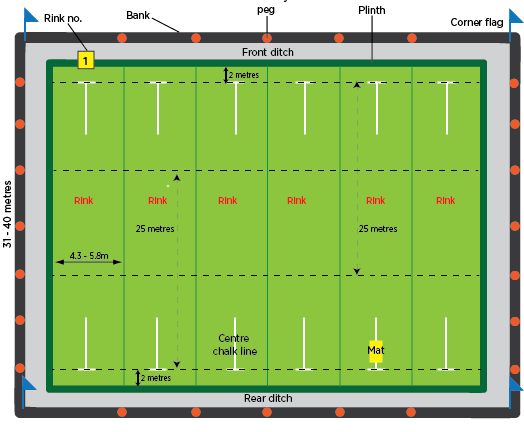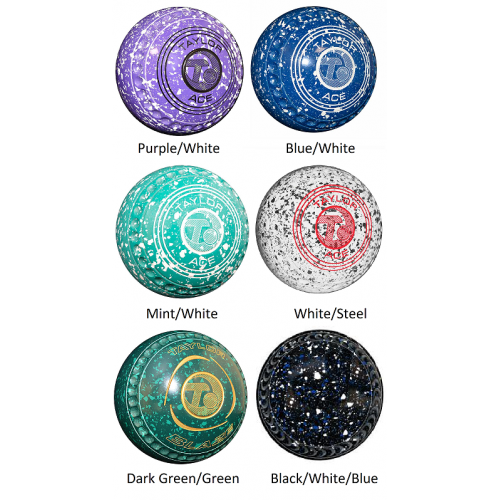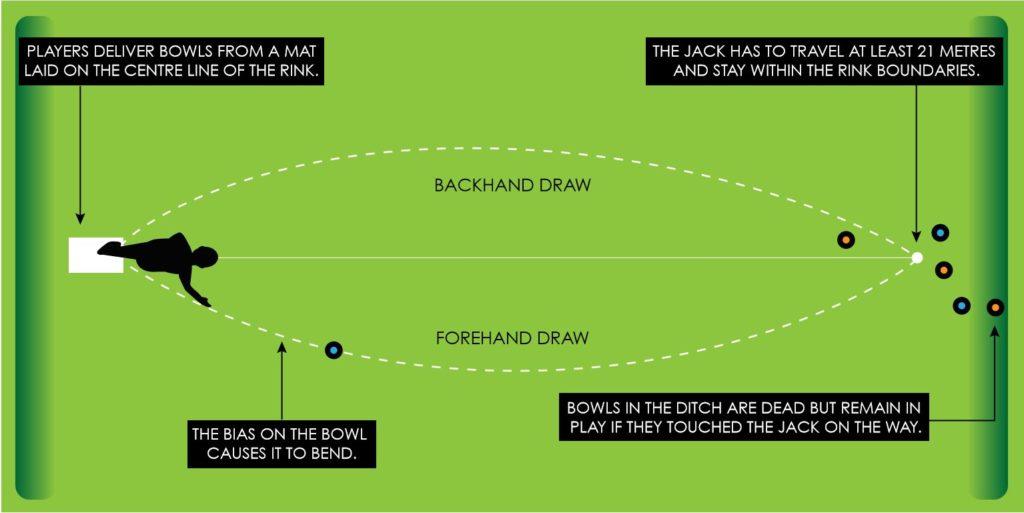
The Rink
Lawn Bowls is played on a flat grass, synthetic or carpet surface called a green.
The green is split into several playing areas called rinks.
Rinks have number indicators at each end and are have boundary markers at each corner.
Each rink will typically have makings to indicate the centre line and maximum length indicators, 2 meters from the ditch, for the mat and jack (called the T).
The mat can be placed anywhere on the centre chalk line.
The jack must be rolled a minimum distance of 23 meters from the mat then centred on the chalk line.
For new players it is easiest to place the mat and jack on the T.

The Lawn Bowl
The lawn bowl (called a wood in some countries) was originally made of carved hard wood but is now typically moulded plastic and comes in a wide variety of sizes and colours.
A full set consists of 4 bowls with each being played in a singles match. Team matches requires different amounts of bowls being used: In a pairs game each player plays 4 bowls; in triples 3 bowls each; 2 each in teams of four.
Each bowl is wider at one side creating a curve which is known as the bias. This bias causes the bowl to run in a curve rather than a straight line.
Depending on the playing surface and player’s preference a wider or narrower curve may be required. Due to this, manufacturers produce a range of models with a variety of levels of bias.
The skill of the game is finding the right weight and line to deliver to get the bowl closest to the jack.

The Delivery
When delivering your bowl, you must have at least one foot on the mat. Upon releasing the bowl, one foot must be on or above the mat’s surface.
Use the bias of the bowl to curve the bowl to the left (forehand) or right (backhand) if you’re right handed. For left handed players these terms are reversed.
Deliver the wood underarm, trying to get a clean and smooth release.

Scoring
The player or team which has the bowl closest to the jack wins the end. Points are awarded for each bowl which is closer to the jack than the other teams closest bowl.
In the picture on the left, the yellow team has 2 bowls closer to the jack than the other team’s closest bowl. In this situation, the yellow team has won the end and scored 2 points.
Sometimes measuring devices have to be used to determine which bowls are closer. No point is awarded if bowls from opposing teams are the same distance from the jack.
Occasionally each player’s/Team’s closest bowl are the same distance from the jack. In this case the end is tied and no points are awarded.
A match can be played to a predetermined number of ends, sets, points scored, time played or whatever you choose to decide the winner.